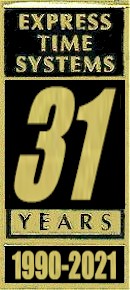The exposure (E) of most racks is 5/8 to 1-7/8 inch.
This is the distance between one pocket and the next pocket. Once the card
height exceeds the pocket depth by the amount of the rack's exposure, a
taller card will gain no increased exposure. For example the numbers 1, 2
and 3 appear on the bottom card but only the number 1 appears on the cards
above it. Given a 7.00" card and a 3.875" pocket depth, 3.125" of the
bottom card is exposed
(H) but only the top 1.00" of the other cards is exposed, due to
the racks exposure of 1.00". Putting cards in only every other pocket gives
double the exposure as indicated by the top three sample cards placed, but
of course cuts the capacity in half.
When choosing the pocket
depth (F), be sure the pertinent card information for
retrieval will be exposed. Ideally, your card height should equal
the pocket depth + rack exposure + 1/4". Card height MUST exceed
pocket depth by at least 1/2" or you will have trouble
removing the card once it's inserted.
Pocket thickness (G) should be
considered when using a rack for a special purpose other than single paper
items, such as brochure storage, etc. Most time card racks have a
pocket thickness of 1/4" or less while file folder racks have a pocket
thickness up to a 1/2" or more. Furthermore, time card rack slots are fixed,
while multi-purpose rack pockets float allowing thicker items to be placed
in some pockets while limiting thickness of neighboring pockets.




